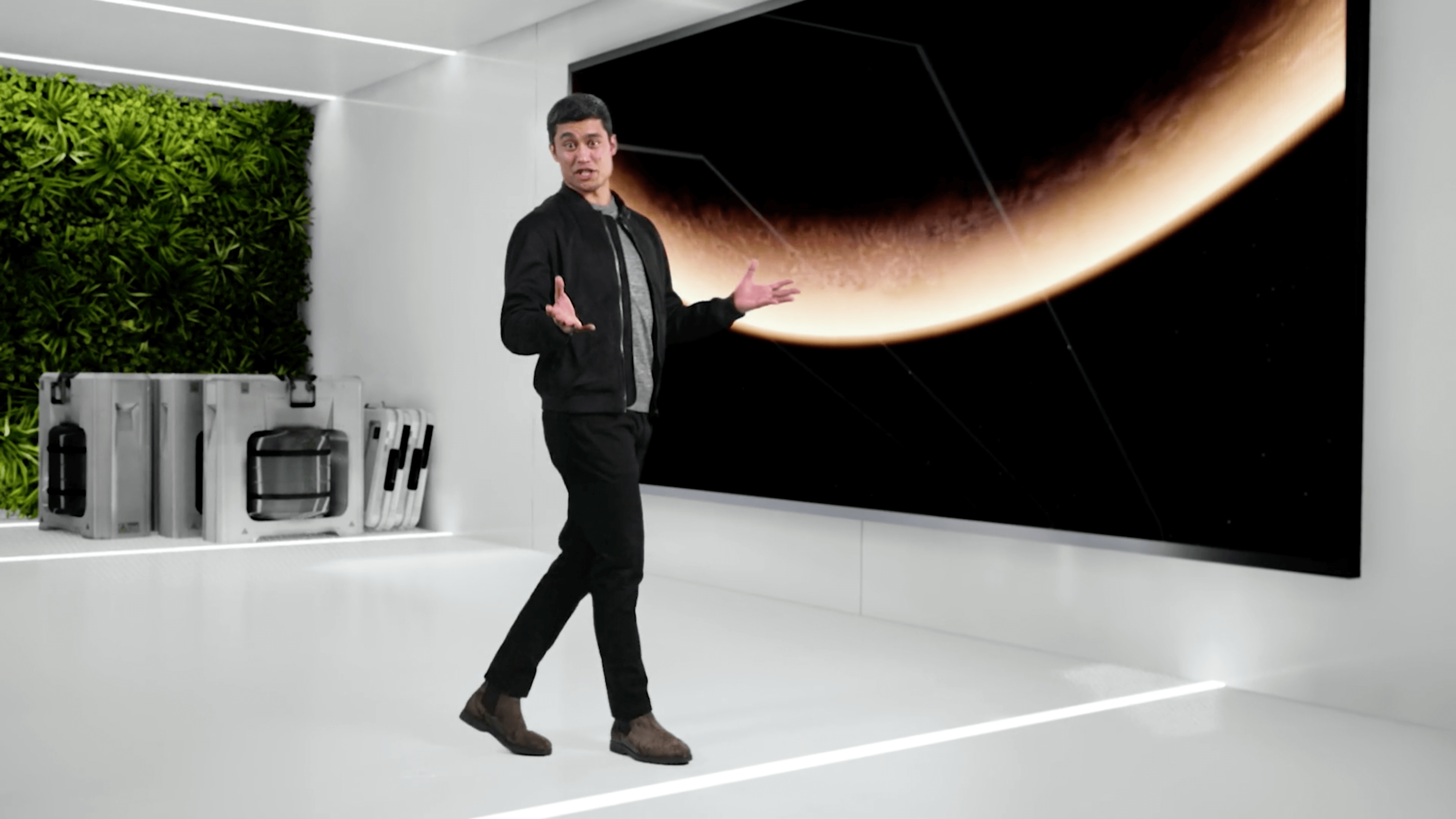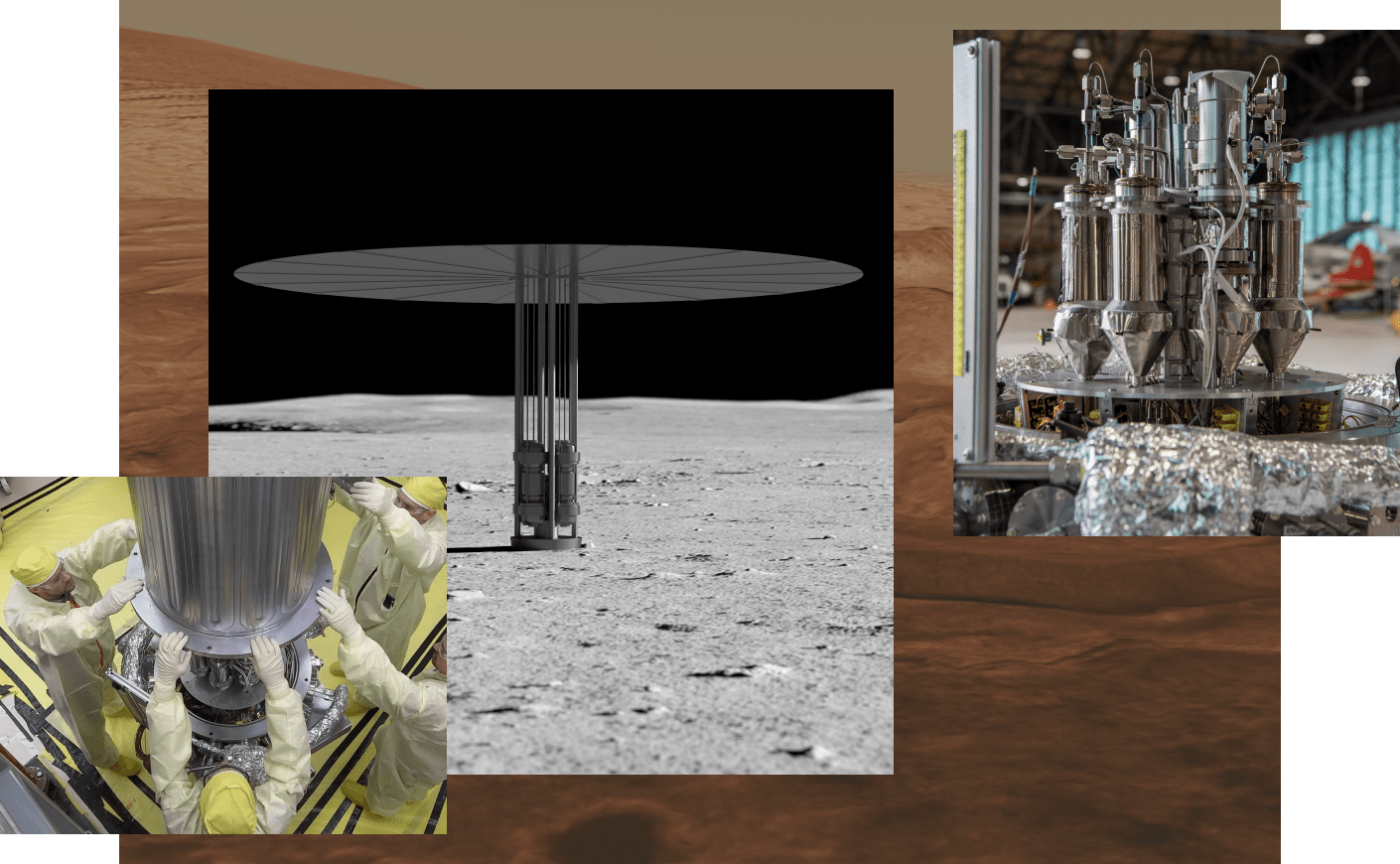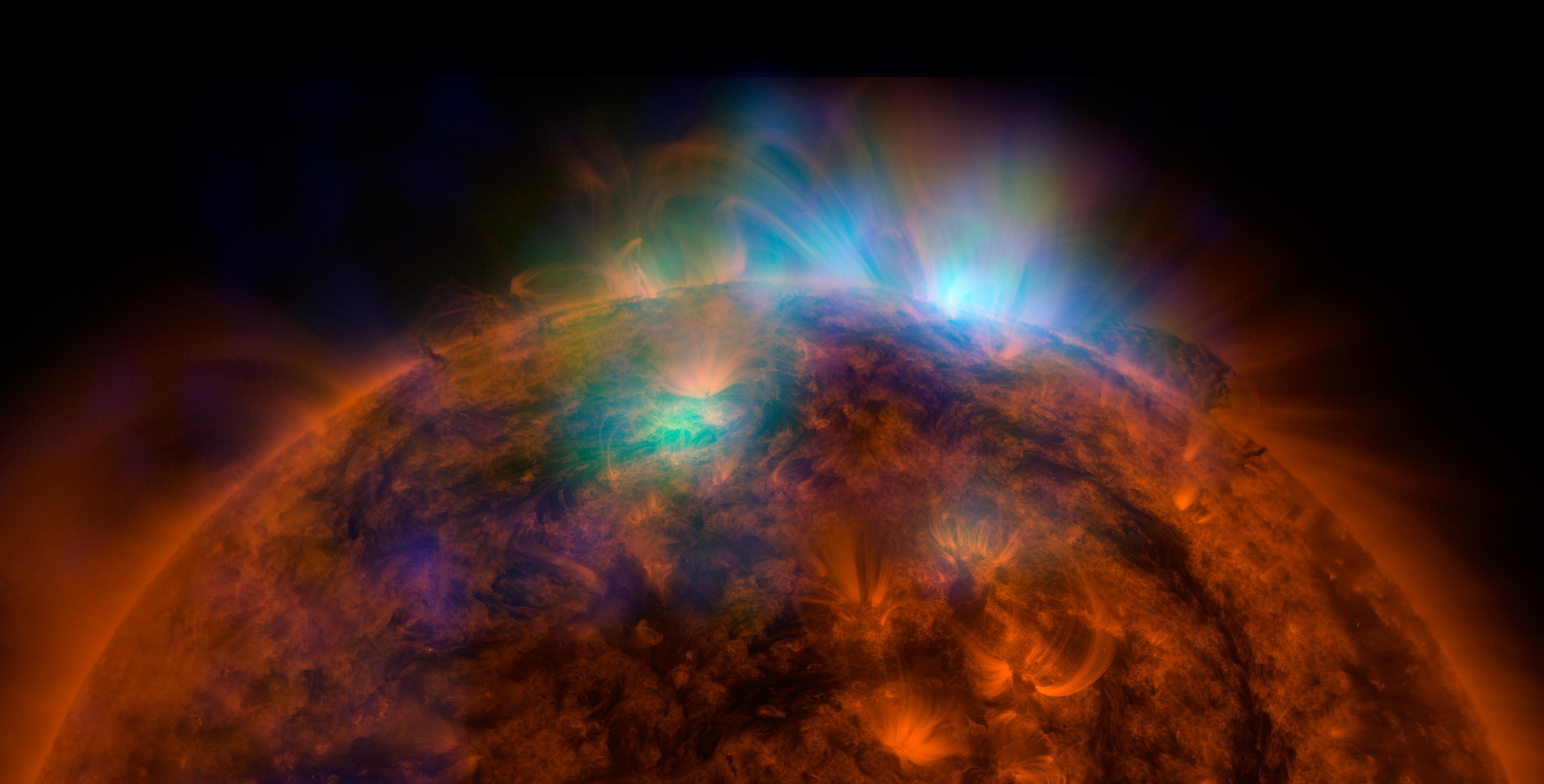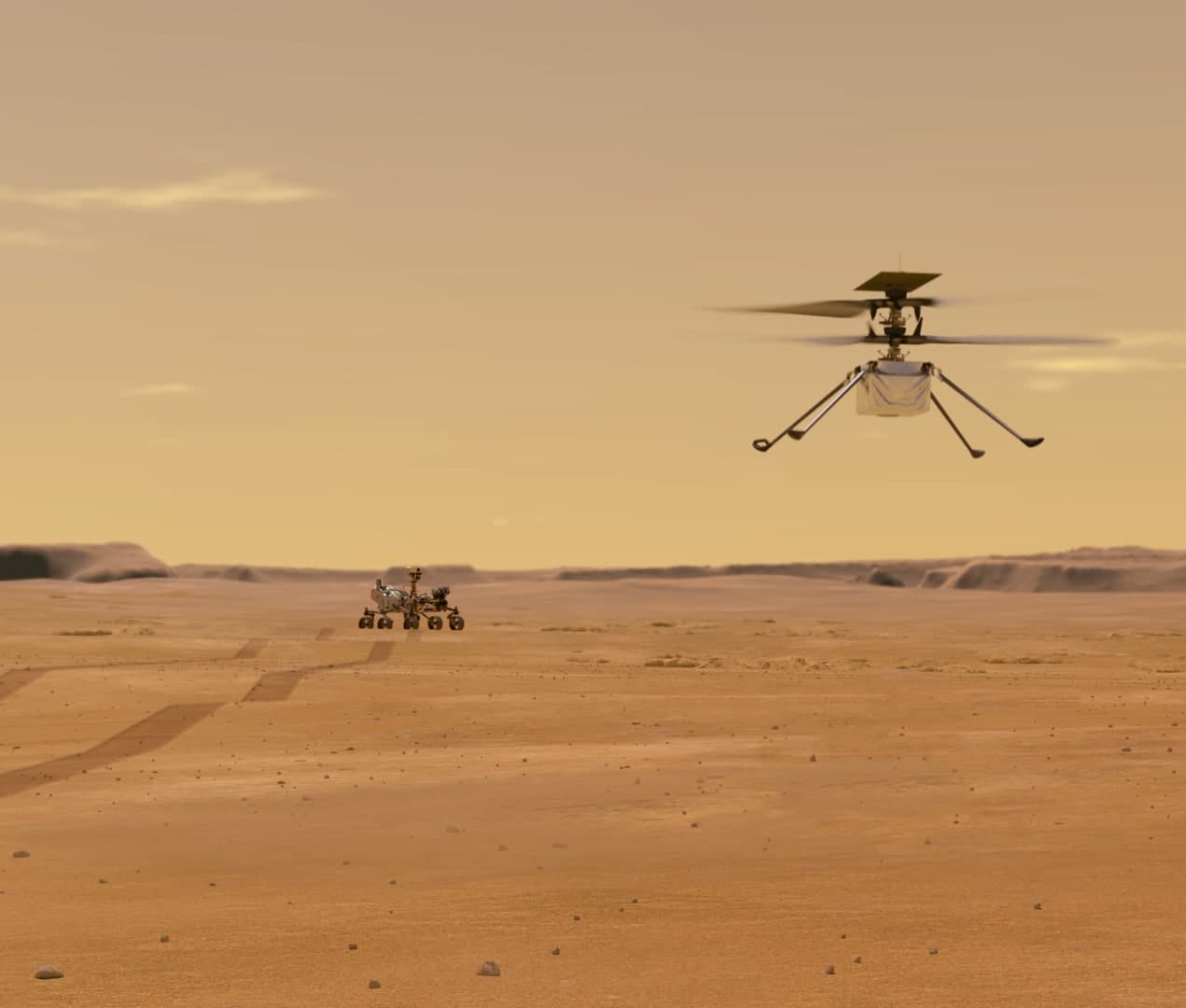


etting up a human presence on Mars will come with a huge range of challenges, many of which are linked to one essential requirement: Power. Whether it’s for creating oxygen, driving rovers, providing heat and light, or communications, future Mars residents will need a constant supply of electricity to keep them safe and keep the mission running.
There’s no power grid on Mars though, and current solutions can only take us so far. So what will the first off-planet power plant look like? We got in touch with two people working at the cutting edge of space power systems in two different agencies to find out.
This article is part of Life On Mars – a 10-part series that explores the cutting-edge science and technology that will allow humans to occupy Mars.
.svg)
.svg)
.svg)
.svg)

NASA’s plans for the future of power generation include nuclear fission systems, in which uranium atoms are split inside a reactor to generate heat. Compared to the radioisotope systems (RTGs) that power rovers like Perseverance, fission systems can produce more power while still staying at a small size.
In March 2018, the agency’s Kilopower project demonstrated a fission experiment capable of producing 1 kilowatt of power, which could be used as the basis for future space reactors. The experiment, nicknamed KRUSTY after the Kilopower Reactor Using Stirling TechnologY, was powered by a core of uranium-235 which NASA described as “about the size of a paper towel roll.” This generated heat, which was then converted to electricity through a mechanism called a Stirling engine.
A future fission surface power system will be small and lightweight and could run for at least 10 years. That makes the concept ideal for future missions to the moon and, eventually, to Mars.
Last year, NASA, along with the Department of Energy, invited ideas from industry for a 10-kilowatt system. Four or five such units could power a Mars habitat with all that entails — like the production of oxygen for rocket propellant as well as meeting the needs of three to four astronauts, which is estimated to require a total of around 40 kilowatts.
Dionne Hernandez-Lugo was the project manager for Kilopower and is now the deputy project manager for NASA’s fission surface power lunar technology demonstration, and she told Digital Trends that they intend to test the first unit on the moon within the next decade.
.svg)
.svg)
.svg)
.svg)

“The idea is to demonstrate the system first on the moon as part of the Artemis program,” she said. “Our project is looking at developing a 10-kilowatt system and doing the first demonstration on the moon. That would help us understand the system.” After this, any required design modifications could be made, and it could be used in future missions to Mars.
The plan for the first test on the moon is for the power unit to stay within the lunar lander. Leaving the unit in the lander “helps with easier operations of the system rather than taking the extra mass that would allow for removal,” she explained. That’s what her team is working on. But they are also hoping to see ideas from industry about how a removable system could work as well. “Right now, within our group, the idea is to leave the system within the lander,” she said. “But there’s a lot of innovations out there, and at this time we are seeking those innovations from industry to see other options that they would have.”
An internal NASA study estimated that each 10-kilowatt unit will be around six meters (19.6 feet) tall and over two meters (6.5 feet) wide, though the exact details would depend on the final design. A concept image (above) produced by NASA shows four such units linked together on the surface of Mars to provide power for a base there, so you can envision what a martian power plant might look like.
One factor that people tend to be concerned with when it comes to using nuclear power on Earth is safety, and that applies to space missions too. The radioactive elements used in nuclear power reactors, like the uranium used in the Kilopower demonstration, give off radiation that is dangerous to humans and which can also cause problems with nearby electronic equipment.
To keep both people and electronics safe, fission power systems are surrounded by thick metal shielding which contains the radiation. Any new power system for a Mars mission would be put through extensive testing on Earth to make sure it was safe even under extreme conditions, such as operational testing, vacuum testing, and vibrational testing.

Hernandez-Lugo pointed out that NASA has already launched over 20 missions in the past which used various types of nuclear power systems, “so NASA has expertise and background in launching nuclear power systems both to the moon and Mars.”
There’s also a concern about the use of highly enriched uranium in power systems, which is what the Kilopower demonstration used. This material can also be used to make nuclear weapons, so some political leaders are worried that using it in space projects might encourage its proliferation on Earth.
To address these concerns, future surface fission systems could use low enriched uranium instead, which is commonly used in power reactors on Earth and is not weapons-grade. “Low enriched uranium designs are very attractive from the perspective of reduced regulation and compliance with recent national space nuclear policy directives,” Hernandez-Lugo wrote in a follow-up email. “The use of highly enriched uranium is still possible if the mission has a prevailing need.”
The latest space policy directive, released by the White House in December last year, only allows for the use of highly-enriched uranium if it is approved by various government bodies and it can be shown to be the only way to complete a mission.





Nuclear power isn’t the only option for power generation, though: One of the most common power options used for space missions right now is solar power. The European Space Agency (ESA) uses solar power for practically all of its missions, and its upcoming Mars rover, called the Rosalind Franklin, will be solar-powered as well.
.svg)
.svg)
.svg)
.svg)

Leopold Summerer, Head of the Advanced Concepts Team at ESA which researchers emerging technologies for space missions, told Digital Trends in an email that solar power has an advantage over nuclear power in that it doesn’t need additional safety measures. He also pointed out that extensive use of solar power technology on Earth means constant developments which can be applied to space missions: “Solar power is a fast-evolving technology offering easy use, access and high maturity in addition to being fully renewable,” he said.
This fast rate of development means engineers are designing panels that can produce even more electricity from the same amount of sunlight, and Summerer expects that future solar systems will continue to get more efficient.

“In space, efficiency is even more important than on ground and we are constantly pushing what is technically possible,” Summerer said. Relatively small increases in the efficiency and mass of solar cells can make a big difference in the total cost of solar systems, particularly for smaller craft like satellites.
But like all technologies, there are limitations on the use of solar power. “It has the disadvantage of being dependent on an external source, the sun, and all the drawbacks that come with it,” Summerer said. In many situations, power from the sun is only intermittent. On a planet with a day and night cycle, batteries can be used to store excess power during the day and keep supplying it at night. But this adds another bulky element to the power system as well as an additional layer of complexity.
One futuristic solution to this problem being considered is the development of orbiting solar power plants, which could work in tandem with solar power panels on the surface to collect energy from the sun and beam it down to the surface wirelessly. ESA is currently seeking concepts to make this idea into a reality.
When it comes to Mars specifically though, there are some challenges with using solar power. As it is further away from the sun than Earth is, less sunlight reaches the planet’s surface. That means explorers on Mars will have access to around half the solar irradiance that they would on Earth.
That doesn’t mean using solar power is impossible on Mars, just that missions have to be very careful with their power usage. NASA’s previous generation Mars rovers, Spirit and Opportunity, used solar power, and current orbiters like Mars Express and the Mars Orbiter Mission are solar-powered as well.
.svg)
.svg)
.svg)
.svg)

However, there’s another problem on Mars: Dust storms. Mars has a complex weather system that occasionally results in massive global dust storms, temporarily blocking out much of the sun’s light and covering practically everything on the planet in a layer of dust – including solar panels. That’s what caused the incredibly long-lived Opportunity rover to eventually go dark, when a massive dust storm rolled across the planet in 2018.
Summerer thinks that by combining surface and orbital solar power plants, you probably could generate enough power for a human habitat. But he also acknowledged there’s value in combining solar power with other power sources like nuclear. “Solar power on the surface and eventually complemented from orbit can provide enough power for human habitats on Mars, but as demonstrated by the latest rovers, such as Perseverance which just landed, sometimes small nuclear power sources provide such a big competitive advantage that I would expect these to also play a role,” he wrote.
.svg)
.svg)
.svg)
.svg)

Hernandez-Lugo concurred there is potential value in all sorts of power systems for a Mars mission, including solar, batteries, and nuclear. “The power system is going to depend on the specific mission,” she said. NASA’s Glenn Research Center, where she works, is the power development center for NASA and performs research into a wide variety of power options, including batteries, solar cells, radio isotope systems, fission power systems, and regenerative fuel cells. The key is to pick the right power source for the needs of the mission, based on the resources available.
There are distinct advantages to a nuclear system for human habitation missions. Firstly, when you want to design a power system for use both on the moon and on Mars, as NASA does, then you need to deal with the two-week-long periods of darkness on the moon.
“When you start thinking about how do you design a mission architecture that allows you to have constant power, then that’s when nuclear comes into play,” she said. “Because you need a reliable system that will give you continuous power during those night operations.”
For Mars, continuous generation of power is important too, especially for the safety of astronauts living there. You definitely want a power system which will keep working in any weather conditions, even during a dust system, and nuclear power can provide that.
Hernandez-Lugo also pointed out that current NASA missions to Mars, like Mars 2020, use a combination of both solar power for the Ingenuity helicopter and nuclear power for the Perseverance rover, to fit the particular needs of the mission.
“At this time, within the agency, they’re looking at advancing all different power systems to have them available on missions such as the moon and Mars,” she said. “So there is a place for all power systems.”